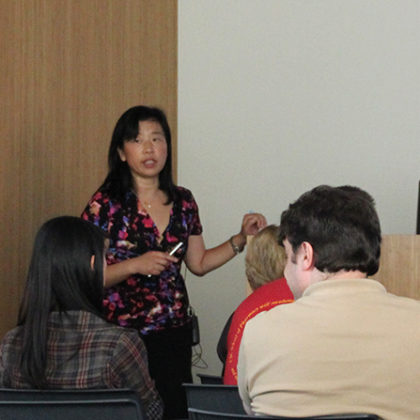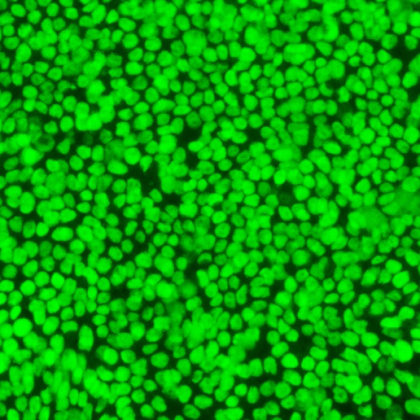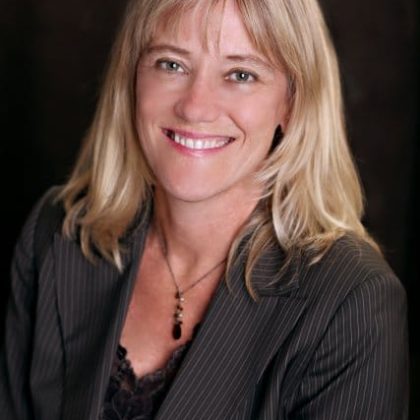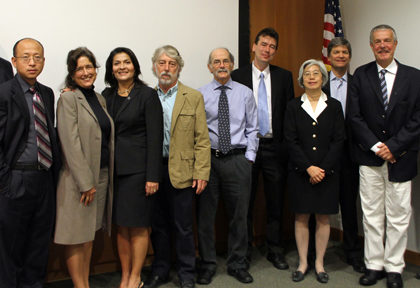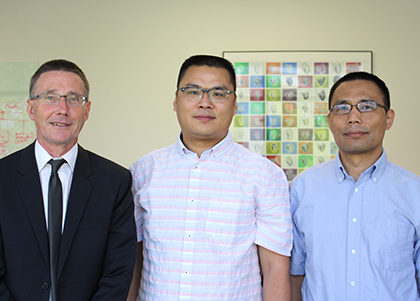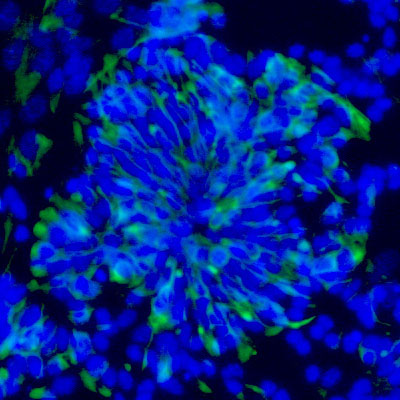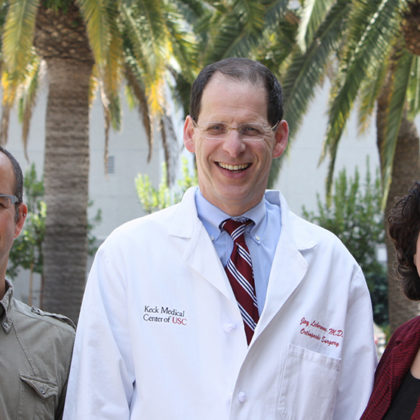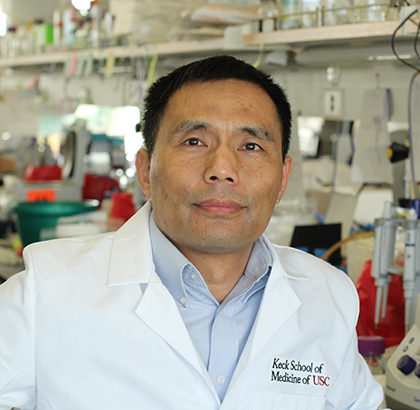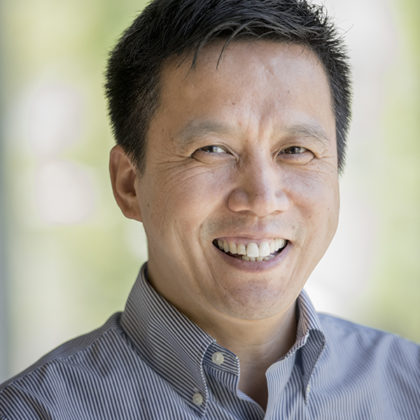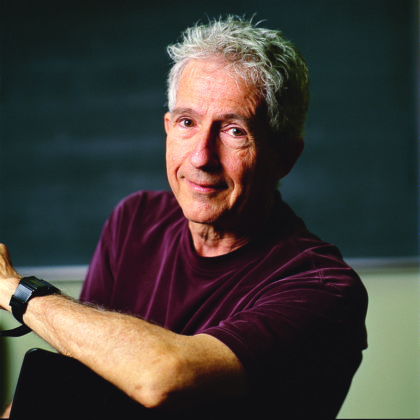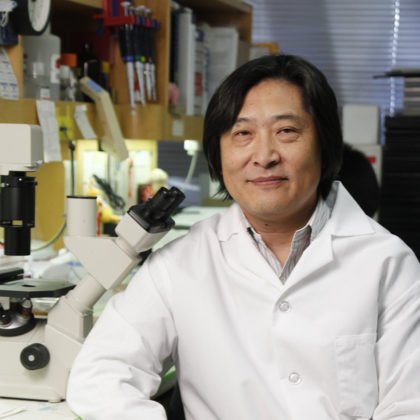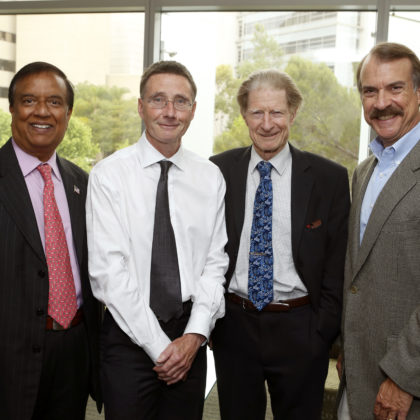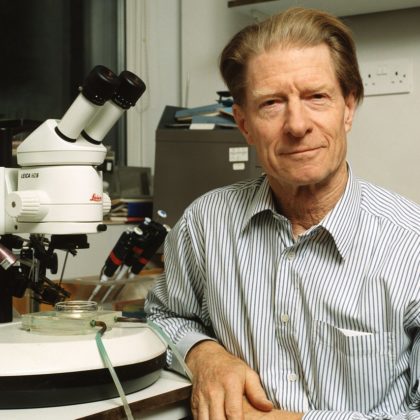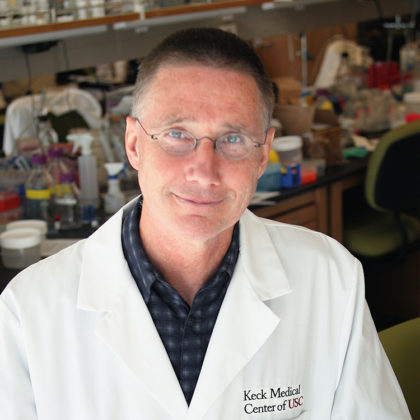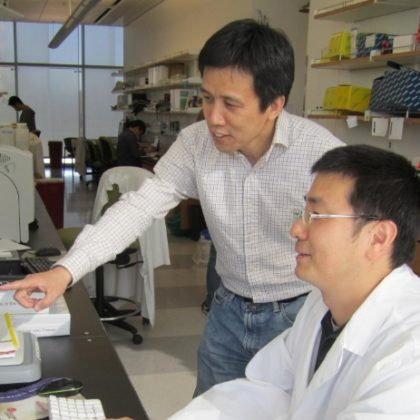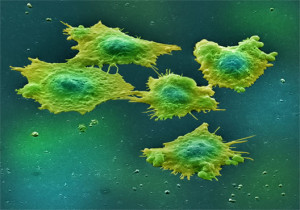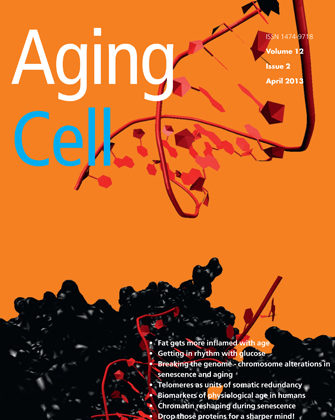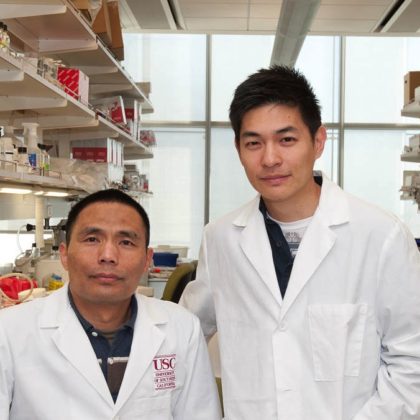Pfizer’s J. Jean Cui explains modern drug discovery
Only five percent of potential cancer drugs make it from phase I clinical trail to FDA approval, but J. Jean Cui, PhD, associate research fellow at Pfizer, beat the odds. Cui visited …
USC researcher reveals how to better master stem cells’ fate
USC scientist Qi-Long Ying and a team of researchers have long been searching for biotech’s version of the fountain of youth — ways to encourage embryonic stem cells (ESCs) and epiblast stem …
Magnetic treatment for high-risk neuroblastoma proves less than attractive
Removing tumor cells with a magnet? It may sound strange, but researchers at Children’s Hospital Los Angeles (CHLA) and their colleagues recently explored whether this technique can create better outcomes for patients …
First Zilkha Alzheimer’s Mini-Symposium examines vascular system connections
Alzheimer’s disease is the sixth leading cause of death in the United States, and more than five million Americans live with the disease, according to the Alzheimer’s Association. Conquering Alzheimer’s was the …
Businessman invests in stem cell research at USC
Chinese businessman Yong Chen has pledged $1 million to USC stem cell researcher Qi-Long Ying to support his future “eureka moments.” “When I talked to Mr. Chen, I told him that groundbreaking …
A special protein helps embryonic stem cells keep their options open
In the ongoing quest to understand how embryonic stem cells (ESCs) retain their ability to differentiate into virtually any kind of cell, USC faculty member Qi-Long Ying and a team of researchers …
USC announces winners of first Regenerative Medicine Initiative awards
Three newly assembled disease teams within USC Stem Cell will take the early steps this year that might lead to future stem-cell based therapies for certain forms of deafness, bone defects and …
A genetic catch-22 promotes and prevents liver cancer
Can the same gene prevent and promote cancer? When it comes to liver cancer, the gene that codes for P53, a protein found in humans and many other animals, involves this catch-22. …
USC study sheds light on stem cell reprogramming
Researchers are learning how to turn regular cells into stem cells, a process called reprogramming. However, some of the mechanisms of the process remain unknown, such as why only a small proportion of the cells can be reprogrammed. Researchers have at least part of the answer: the structure of genes.
Common genetic disease linked to father’s age
Scientists at USC have unlocked the mystery of why new cases of the genetic disease Noonan syndrome are so common—a mutation, which causes the disease, disproportionately increases a normal father’s production of …
New method to treat chemo-related jaw bone necrosis
Over the last decade, osteonecrosis of the jaw (ONJ) has emerged as a devastating and debilitating condition of cancer patients receiving high doses of antiresorptive chemotherapy (bisphosphonates and denosumab). ONJ currently has …
Interview with Sir John Gurdon
Sir John Gurdon, a Nobel Prize-winning biologist whose experiments in the field of cloning laid the foundation for modern stem cell research, visited the USC Health Sciences Campus on May 16. He …
Nobel Laureate discusses history of cloning
Cells can be stubborn things. A skin cell resists changing into a liver cell, and a heart cell wants to remain a heart cell. But with the right kind of manipulation, they …
Nobel laureate to speak on stem cells at HSC
Nobel laureate Sir John Gurdon will speak on “From Nuclear Transplantation to Prospects for Cell Replacement” on May 16 at noon in the Aresty Auditorium of the Harlyne J. Norris Cancer Research …
Probing the power of stem cells
Piece by missing piece, scientists at the Keck School of Medicine of USC are deciphering the powerful gene regulatory circuit that maintains and controls the potential of embryonic stem cells (ESCs) to …
Unraveling the mystery of pluripotency in embryonic stem cells
Using advanced sequencing technology, USC Stem Cell faculty member Wange Lu, in collaboration with Kai Wang of the USC Zilkha Neurogenetics Institute, explores the mystery of pluripotency by mapping out the interaction …
USC scientists contribute to international research on genetic risks for cancer
Researchers from the USC Norris Comprehensive Cancer Center are joining hundreds of scientists worldwide in reporting the discovery of more than 80 new regions of the human genome that indicate risk for …
USC researchers show increase of cell mutations with age
Like an old car that gradually rusts as it ages, even if there is no lethal damage to a critical part of the car, a human body accumulates genetic damage as it …
McMahon discusses central role of stem cell biology in medicine of the future
USC scored a major coup when it brought scientist Andrew McMahon to the Keck School of Medicine of USC from Harvard University, where he had served for almost two decades as a …
An important factor identified in reprogramming
How is the stem cell state programmed? A new study in Qi-Long Ying’s group at the Eli and Edythe Broad Center for Regenerative Medicine and Stem Cell Research at USC highlights the role …
